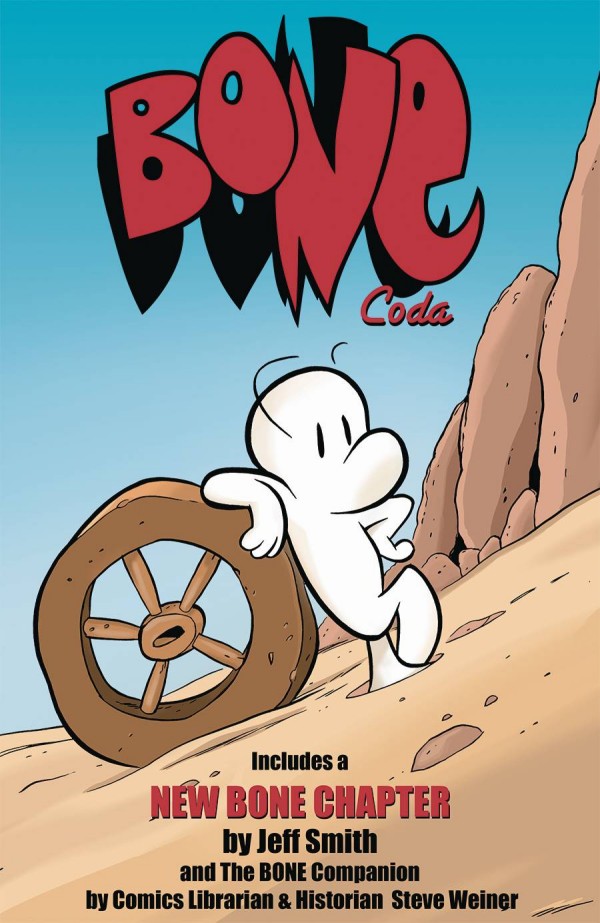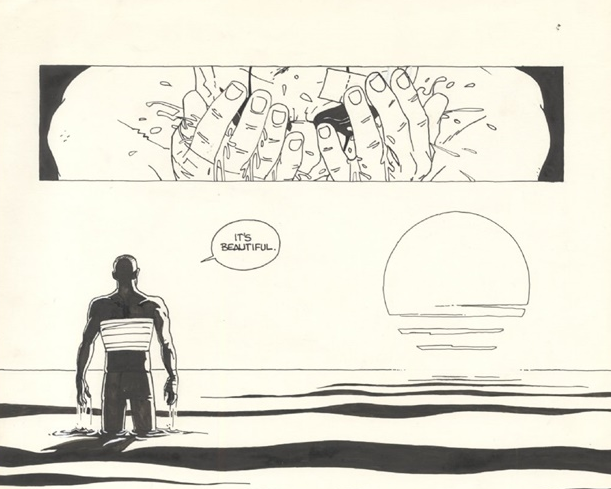
Love Everlasting #1
Created by Tom King and Elsa Charretier
Written by Tom King
Art by Elsa Charretier
Colors by Matt Hollingsworth
Letters by Clayton Cowles
Available via Substack
I have everlasting love for the first issue of Love Everlasting. This is an absolutely gorgeous comic book that feels simultaneously of the past and the present. It's a smart, self-aware story that's also dramatically over-the-top, and raises lots of interesting questions.
There were lots of big Substack comics announcements this week, but the one I was most excited about is the collaboration between Tom King and Elsa Charretier. Both of them are among my favorite creators. King is the writer of some of my favorite comics of the past few years (see my reviews of Supergirl: Woman of Tomorrow and Strange Adventures) and I absolutely loved Charretier's work in the November series of books. She's also a terrifically talented multi-hyphenate, with a deservedly popular YouTube channel, successful Kickstarter Art Books, and more.
This week, when they announced Love Everlasting and Everlasting Productions, I was very intrigued. Here's what they themselves said is the pitch for the project:
Love Everlasting is an epic, mind-blowing series of hope, death, and rebirth set in a world as frighteningly fantastical as any found beyond the stars or after the apocalypse: The Romance Comics of the 50s, 60s, and 70s. In this blood-rose tinted reality, Joan Peterson slowly discovers that she is trapped in a seemingly endless cycle--a problem to be solved, a man to marry—and every time she makes it, falls in love, kisses him, she disappears into another teary saga. She needs to find her way out, find who she is, what this world is. To escape she must deconstruct her stories and reconstruct her identity.
Romance comics sold millions of copies. They are a reflection of America’s ongoing obsession with finding the right, white utopia to which we might all conform. This comic is an examination of the perversity of this obsession, of the damage done, the hearts broken, the lives lost in pursuit of the beautifully impossible: of love everlasting. This is not just a mystery to be solved; it is an ongoing adventure, an exploration of the need for love. As Watchmen did for superheroes and Walking Dead did for horror, Love Everlasting will use use the tropes of romance to explore the heart of humanity.
That's extremely ambitious! Time will tell if Love Everlasting will end up as influential as Watchmen or The Walking Dead. But I love ambition. I love when people swing for the fences creatively. And issue #1 of Love Everlasting feels, consistent with the mission statement, like a very ambitious comic. This comic is big and bombastic and full of hyperbolic emotion, consistent with the sorts of scenes and tropes you are likely familiar with from romance comics across the decades. My impression in reading this comic is that it's full of all sorts of nods and homages if you're really well-versed in romance comics. But even if you're not, this is an incredibly accessible read. Chances are, even by cultural osmosis (whether from satires, homages, comics you read as a kid, or Roy Lichtenstein paintings), you will be familiar with many of the tropes of romance comics. These are tropes that are often also found in movies, TV, and books. The woman who's in love with the best friend's boyfriend. The woman in love with someone her family wouldn't approve of. Men fighting for the honor of a woman. It's all here.

I think it's ok to say (since it's in the promotional materials) but the protagonist in this story is Joan Peterson; she's your classic romance comic protagonist. We met her in the 1950's as she's in love with her best friend's boss, for whom she ends up working. And just when you think Joan has found a happy ending, the story changes. It's now the 1960's and Joan has fallen in love with a beatnik/hippie musician and her father doesn't approve. And just when you think *that* story has come to a happy ending, Joan next finds herself in the 19th century in the Old West. What's interesting is that each time she moves from one story to another, she seems to retain some sort of memory or awareness or memories of the prior life. But these moments are unsettling moments of terror for Joan. And their presence in what's ostensibly a romance comic does a very effective job of ramping up the tension and unease.
I'm very excited to see where this story goes. I enjoy a story that plays with the tropes of the genre (Watchmen, Sandman, Planetary, Astro City, many others), and I also have enjoyed stories where the protagonist begins to be aware that they themselves are in a story (see, Animal Man from Grant Morrison), but it's a fine line to walk. If you steer too far into mocking those tropes, you might end up just mocking the entire genre that you're portraying (Scary Movie and other similar parodies, and also see The Boys, of which I'm not a big fan, at least of the comic). Parody might get some laughs from me, but it doesn't interest me as a method of storytelling. And I don't just want to see a meta-story because it's fun or cool. I need the story to still be about something. Through one issue, I can tell you that I think King and Charretier are heading much more in the direction of stories that play with the tropes of genre (in this case, romance) in a loving and thoughtful way. I can't really speak to their level of familiarity with romance comics, but I can tell you that each of King (Mister Miracle, The Vision, Strange Adventures) and Charretier (November, The Infinite Loop, Star Wars, issues of C.O.W.L. and Department of Truth, many other projects) are both keen observers of human emotion and the human condition. King has taken his readers on some remarkable trips, as he looked at family life, people with high-functioning depression, PTSD, and other very challenging human emotions and conditions. But he wouldn't have been the first name that came to mind if someone said "romance comics". I actually think that's really great. People might expect more "gritty sad guy" stories from him (all of which I've loved), but I'm thrilled to see him subverting expectations and trying something new. He's more than capable of writing extraordinary female characters - just go read Supergirl: Woman of Tomorrow, and you'll come to live Ruthye and Supergirl and their journey.
Charretier is one of my favorite artists working today. More specifically, she's one of my favorite artists with regard to a story that's fundamentally rooted in human relationships. I particularly feel this way after the conclusion of the November series. November is a series of 4 hardcover graphic novellas, and it tells the story of 3 different women and the ways in which their lives intersect on one terrible, dramatic night. It also dives much more deeply into the lives and relationships of these characters, showing them in childhood or in earlier phases of their lives. There are terrific depictions of action, and wonderful locations and backgrounds, but fundamentally, what really draws me to Charretier's work are the people.
Charretier has an incredibly appealing style that's exaggerated in a "cartoonish" way, but never for the purpose of mocking the characters or just to be funny. No, everything that Charretier does in regard to character design feels rooted in the needs of the story. November has a character called Mr. Mann. He's a larger, heavy-set man, and it feels like another artist might have played the depiction of this character for laughs - but Charretier never does. He's a scary, intimidating man, and his size reinforces this by reinforcing the sense of menace that other feel around him. And with relatively simple, minimalist design, Charretier is able to really bring to life different characters with specificity. In Love Everlasting, the romance setting is a perfect fit for Charretier's strengths. Romance stories are full of heightened emotions, and Charretier's knack for showing so much in facial expressions really works perfectly. Even if this were a wordless comic, we could generally get the gist because her storytelling is so strong.

I don't want to imply that Charretier doesn't excel in other aspects of comic storytelling and creation, because she absolutely does. Her locations and settings are absolutely gorgeous and they all feel perfect for the era (I really want to just jump into the 50's setting, which evokes a real Mad Men aesthetic). Her sequential storytelling is definitely on point and it doesn't feel like anything is wasted here. As with all of her other work, the story flows very well from panel to panel. And, she adds in some really gorgeous background, particularly in the Old West Setting.
Charretier has some fantastic artistic partners in Matt Hollingsworth as color artist and Clayton Cowles on lettering. Charretier and Hollingsworth have worked together previously (on November) and they continue to be an exceptional team. The color palate in November was a lot more muted and somewhat monochromatic (or at least, variations on a color). Here, by contrast, the colors are big and bright and vibrant. The distinctions between colors are clear and striking, and the coloring is flat (I would not want to see Charretier's work with overly rendered colors). Even when dramatic, the colors tell the story of an inviting world, where we can expect our story to have a happy ending. Which is why they're such great colors to use in a story that's all about asking questions about that happy ending, and messing around with the conventions of the genre. You don't expect a story where the self-aware protagonist is beginning to feel like she's losing her mind, but that's what makes the contrast so great. It subverts expectations, and even as the story gets unsettling, the colors are as cheery as ever.
Cowles' lettering is similarly additive to the story. Each different sub-story within the issue has its own introductory lettering (providing the title of the story and listing the creative team), and each one of these feels completely era and genre-appropriate. And they're also just a really fun way to begin each story. But interestingly, they also feel like they get louder and more ornate as the issue moves along. And the lettering throughout the issue feels like it works perfectly within the story, which does not surprise me given Cowles' excellent track record. What I'm saying is, this story really excels in all aspects of storytelling and production.
Love Everlasting is an absolute blast to read. It's also not done anything to make me doubt the ambition of the creative team. Given the strength of the debut and the track record of the creative team, I have a lot of confidence that this will end up being something special.

[Love Everlasting #1 is now available, for free, from King & Charretier]






